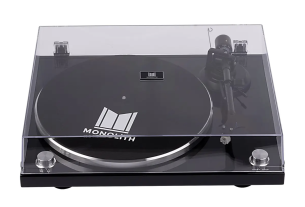You know the electricity-in-your veins feeling when you say the same word at the same time as someone else? That jolt as you realize what’s happened (and, more often than not, race to shout out “jinx!”)? Well, Blank Slate is a game that’s all about capturing that feeling and seeing who’s best at predicting it.

What Is Blank Slate?
From publisher USAopoly, Blank Slate is a party game for 3-8 players, although that’s a loose restriction. Buy another set, or simply scrounge up some paper and pens, and you can easily play this game with as many players as you have handy and, since it’s about saying the same thing as someone else, the bigger the group the more fun it will be. Listed for ages 8 and up, the game lists an average playtime of 20-35 minutes but, as with most party games, it’s really a “play it until you want to play something else” kind of a game.
What’s in the Box?
Blank Slate comes in what I consider to be a medium-to-large game box. The same size or larger as such games as Catan or Azul, which are rife with components and bits. This game, however, could easily have been housed in a box half its size, and probably would make a better impression if it was fitted more concisely into a box like Cards Against Humanity or Utter Nonsense. It comes with:
- A box of 250 word cards
- 8 dry-erase slates and markers
- Scoreboard
- Rules

There’s nothing wrong with the components of Blank Slate, but the box sets certain expectations that are immediately dashed when you open it. At $24.99 it’s a fair value either way, but it can predispose you against a game when the contents of the box seem out-of-whack with the box itself, so be forewarned.
Otherwise, everything is clean, solid, and serves its purpose well. Handheld dry-erase boards are always enjoyable, although be prepared to purchase more markers, as I’ve never owned a game with markers that didn’t dry out after a very short amount of time.
How to Play Blank Slate
When it comes to party games, if the rulebook is longer than 2 pages, or if it takes more than 60 seconds to teach, it’s probably not going to be good. Blank Slate’s rules are a clean 2 pages that could easily have been condensed to 1, and will take all of 30 seconds to teach.
Each turn, a word card is revealed that gives a word followed by a blank. Examples include: cat______, full_____, evening_____, and so forth. Each player then jots down a word on their slate to “complete” the word card (Cat-nap, full-house, evening-gown). Players then simultaneously reveal their answers, and score based on their matches.
The goal is to match just one other player (which scores you 3 points), although matching multiple other players (which gives you 1 point) is still preferable to matching no one (0 points). So the game becomes about trying to predict your shared language and inside jokes.
The scoreboard goes up to 25 with the first player to hit the target score being declared the winner.

Will I Like Blank Slate?
Games like this hold a certain nostalgia for me. Growing up, my older and brother and I shared a bunk-bed, and this often led to late nights playing impromptu word games just like this as we drifted off to sleep. Verbal games are a great way to pass the time and keep your brain moving, and Blank Slate reminds me a lot of those off-the-cuff games I played with my older brother and, later, my younger brother as well.
As with most games that fall into the “party game” category, it’s best when any notion of scoring is thrown out. This is a fun activity, but one which can quickly grow either tedious or contentious if you treat it like a proper, competitive game. It’s fun to get inside people’s heads and see how they think, but it’s less fun to learn that you’re extremely bad at it and find yourself “losing.”

Minus the scoring, this fits right in alongside USAopoly’s growing library of light, quick games you can play with large groups and that are appropriate for avowed non-gamers. That said, I don’t think this offering is quite as strong as some of the others that USAopoly offers, such as Tapple and Telestrations, both of which are just as quick to learn but take a little more cleverness and creativity.
Of course, the reverse could also work in Blank Slate‘s favor, making it the stronger candidate for groups that don’t want to compete, don’t want to work too hard, but just want to sit around with their friends and laugh. There’s very little tension in Blank Slate, but more than enough fun to make it worth the price tag if you need a party game.

![]() To subscribe to GeekDad’s tabletop gaming coverage, please copy this link and add it to your RSS reader.
To subscribe to GeekDad’s tabletop gaming coverage, please copy this link and add it to your RSS reader.
Click here to see all our tabletop game reviews.
Disclosure: GeekDad received a copy of this game for review purposes.




